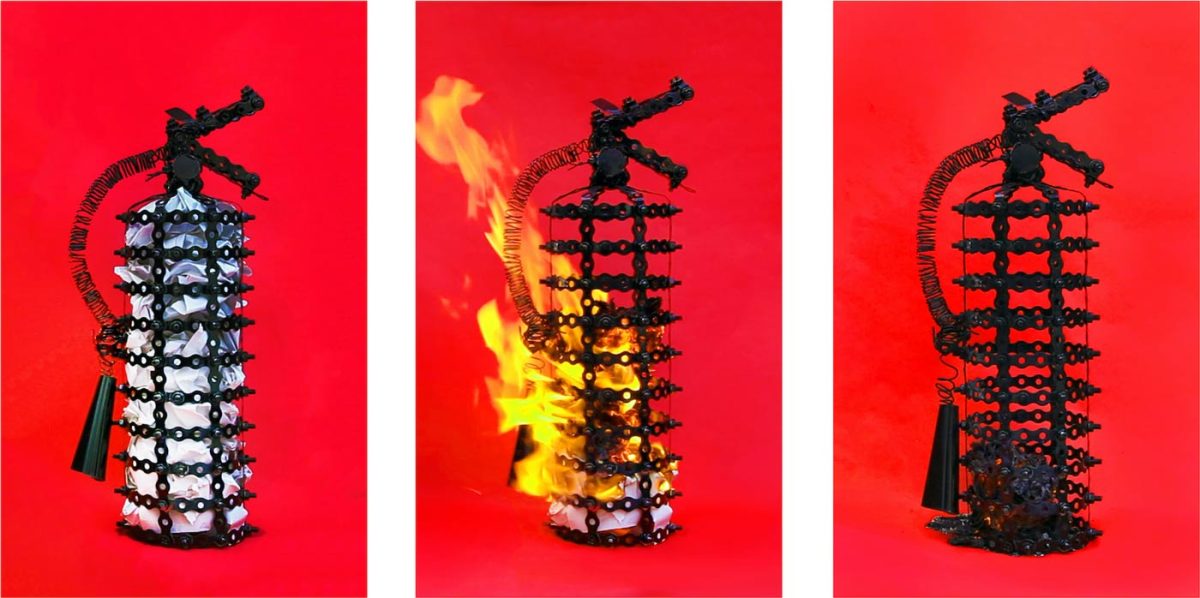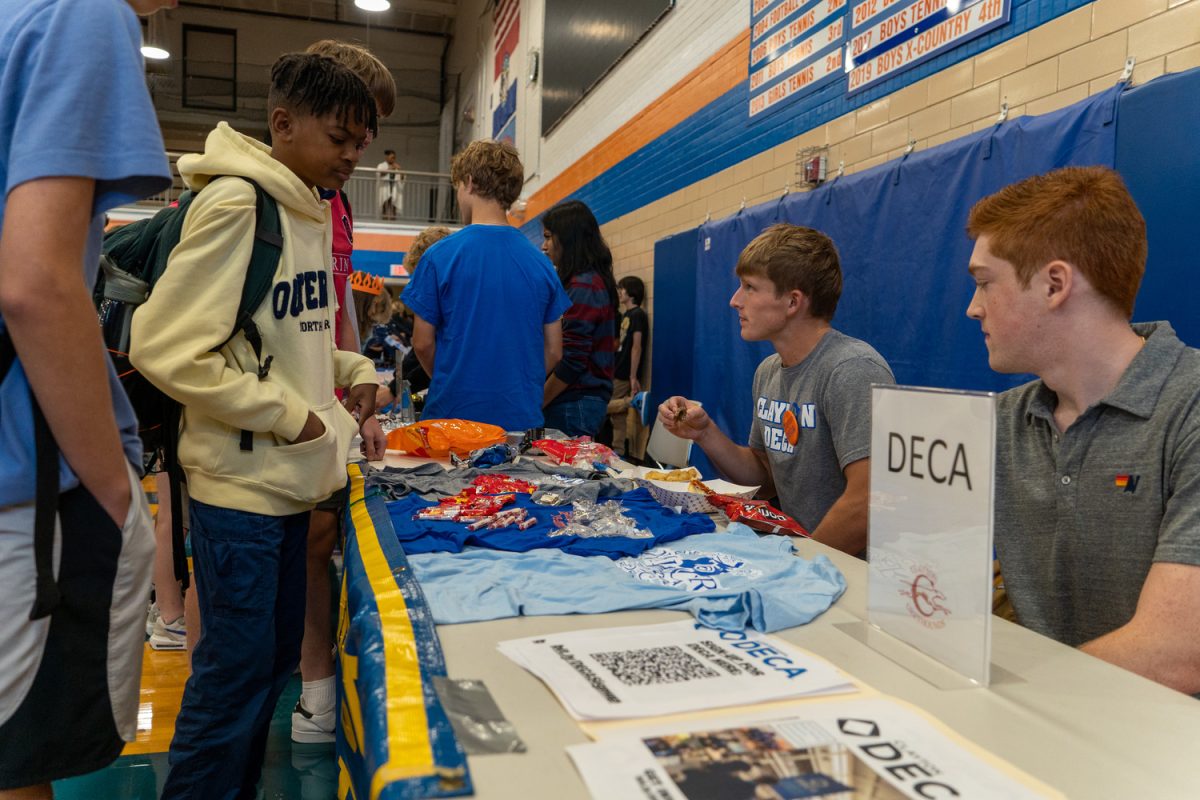Tin, tantalum, tungsten, and gold. These four minerals are components of all cell phones, as well as nearly all computers, televisions, and other electronic devices. They make your phone vibrate, your laptop power on. However, according to the Enough Project, an organization that works to end genocide and war crimes, they are also the link between the ordinary American consumer and violence in the Congo. For this reason, the minerals are referred to as “conflict minerals.â€
The minerals, called the “3Ts and gold†by Enough, are factors behind a conflict in the eastern Congo that has been continuing for over a decade. The conflict has resulted in over 5 million civilian deaths and an estimated 45 thousand deaths per month, according to the International Rescue Committee.
The Enough Project’s campaign called RAISE Hope for Congo strives to promote awareness of the conflict and advocate the empowerment of women and girls in the Congo. It works to educate the public, in part by collaborating with celebrities like Ryan Gosling and Ken Baumann. One of its main focuses is creating awareness of the use of conflict minerals in common electronic devices.
The war in the Congo is rooted in the end of the 1994 genocide in Rwanda, a neighboring country, according to field manager John Bagwell of the Enough Project.
“There was a power-flip, and the group that was perpetrating the genocide and killing all of the people in that period of time was kicked out of power,†Bagwell said. “Many of the people that were committing the atrocities and doing the murdering in Rwanda fled next door into the Congo. So that really was the basis for how armed groups started to come in. They had experience and knowledge about how to organize and what it means to control people through fear and terror.â€
Prior to the arrival of the Rwandan groups in the Congo, armed militia groups existed, but had a smaller presence. Bagwell said it was primarily a group called the FDLR from Rwanda that increased the violence that has continued from the late nineties through today.
Due to weak government and corruption within the Congolese army, armed groups are able to gain control of large areas.
“Essentially what you have is a situation where it’s just like the Wild West – it’s like the Mafia or something,†Bagwell said. “There is no rule of law, there are no consequences for raping and killing, there are no effective structures in place to hold people accountable. So it just turns into every group for itself, and that’s really led to what we see now.â€
Armed groups know that regions with major mining sites mean profit because of the multi-million dollar trade surrounding conflict minerals used for electronics. As a result, militia groups target mining areas and the civilians living around them. They instill fear in the people through murder and rape, and make large profits by taxing the mining areas and trading minerals.
However, the issue of conflict minerals is not an extremely well known one.
“I think it’s a fairly new realization that the connect is so direct between the minerals that end up in cell phones and laptops and other electronics, and the war that’s going on and the financing of arms groups,†Bagwell said. “You look back on other big campaigns to change countries and dynamics and to stop wars, and it takes a long time for something that doesn’t directly affect the American people to catch on and make the connection. The blood diamond campaign took many, many years to really catch on and to be something that people had heard about and knew about and cared about.â€
According to the Enough Project, the raw minerals are smuggled out of Africa and sent to Asian countries to be refined. They are mixed with minerals from other places, making it somewhat difficult for the minerals financing the conflict in Congo to be traced. However, Bagwell said that it is likely that most electronic devices contain conflict minerals.
In addition, these minerals are found in other industries such as the automotive industry, which uses large quantities of tantalum.
“We’re trying to get other industries on board, as well, so we can clean up the whole supply chain, not just for one product, but across the line, because our goal is to stop the violence,†Bagwell said.
In July, legislation was passed requiring U.S. companies to annually report to the Securities and Exchange Commission if certain minerals they use originated in the Congo or nearby countries. Companies must also report how they are preventing purchases that finance armed groups in the Congo and surrounding areas, according to the New York Times.
The legislation is the first significant step forward for activists such as those from Enough. However, Bagwell said that a way to certify products is still necessary.
“What we would like to see is a system where you are actually certifying that certain minerals coming out of Congo are not contributing to conflict,†Bagwell said. “You can buy conflict-free diamonds, you can buy organic food that you know is organic, because it’s been certified with that label. The legislation gets a good start on the tracing and the auditing for companies that use these minerals, but what it doesn’t do is that big third step, which is set up a certification system.â€
In order to move toward that goal, Enough encourages people, especially young adults, to speak out against the use of conflict minerals, whether it is with a petition, protest, or letter to the government. Bagwell said that young people hold a great deal of power when it comes to creating change because electronics companies often market to teenagers the most.
Schools, as a whole, are also highly important in the movement toward conflict-free products.
“Right now it’s about voicing support for the campaign, for the intent, and for the goals that we’re trying to accomplish,†Bagwell said. “By doing that with an institutional voice, with a school-wide voice, it will have a much bigger impact than just individual consumers because of the big contracts and the relationships they hold with these companies that they purchase from.â€
For the Enough Project, turning awareness into motivation for action is an important step.
“Many times when we talk about these issues we get so caught up in the practical arguments and everything, and we lose sight of the humanity and the moral aspect that people are dying everyday as a result of this conflict,†Bagwell said. “We as human beings, no matter where conflict occurs, have a responsibility to do what we can.â€






